

A tiny square city called “Panyu” sprang up on the coast of China’s South Sea in 214 B.C., thus raising the curtain for an exceptionally glorious history of city development.
This small city, known as an ideal spot for business, burgeoned since the founding thanks to its unique geographical advantage. The city has become the cradle of the Marine Silk Road in the east starting from the 3rd century; the No.1 port of the nation during the Tang and Song dynasties and even the only Chinese port of foreign trade for certain periods of time during the Ming and Qing dynasties, outshining all other ports of the nation. In addition, it is also the only big port in the world navigation history to stay prosperous for nearly 2,000 years. Up until now, the Canton Fair, which has been held in the city for 60 years, is still the barometer of China’s economy and one of the most important platforms for world trade.
Time flies by, transforming this small, remote and obscure city into a renowned international trade center and an important national central city over more than two thousand years of time.
This endless glory has made the world remember the name of the city, Guangzhou, more clearly over time.
If it can be said that trade brought Guangzhou to the world, then the glamorous titles of “City of Rams”, “City of Flowers” and “Food Capital” all grant this civilian city unique charms and endless imagination.
Today, as the host city of the 2017 Fortune Global Forum, this renowned historical and cultural city is being revitalized as the curtain is raised on the campaign to build an international navigation center, a logistics center, a trade center and a modern financial service system as well as the acceleration of the construction of an international navigation hub, an international aviation hub and an international sci-tech innovation hub and the implementation of the strategy to build a national central city of innovation.
Chapter I Glamorous City of Flowers
The most gorgeous symbol of Guangzhou is flowers, which bloom all seasons along, creating a spectacular view for visitors. The official flower of Guangzhou city is Kapok.
The city planted more than 100,000 flowering trees of all kinds in 2016 and established 60 flower appreciation locations with different flavors. The “One Road One Scenery” projects on 12 local roads had also been completed during the same period of time.
Geographic Division
Located in the south-central portion of Guangdong, South China, Guangzhou is at the northern tip of the Pearl River Delta near the mouth of the Pearl River estuary, neighboring Hong Kong and Macao. The city spans from 112° 57' to 114° 03' E longitude and 22° 26' to 23° 56' N latitude.
Guangzhou has eleven districts under its jurisdiction, namely Yuexiu, Haizhu, Liwan, Tianhe, Baiyun, Huangpu, Huadu, Panyu, Nansha, Conghua and Zengcheng, under which there are 34 towns and 136 street offices.
Land Resources
Guangzhou boasts a total land area of 7,434.4 square kilometers, with a large variety of adaptative lands including 854 square kilometers of arable land and 2,550 square kilometers of forestry land.
Climate
Located in the Pearl River Delta and bordering the South China Sea, Guangzhou features a maritime-monsoon climate with warm temperature and ample rainfall, sufficient sunshine and heat, minor temperature variation, long summer and short frost periods, etc.
The city witnessed extraordinarily heavy precipitation, frequent rainstorms and severe impacts from typhoons in 2016. The average annual temperature of the city was 22.4℃ in 2016, 0.2℃ higher than that of the average year; the rainfall was 2,638.3 millimeters, 42% more than that of the average year, breaking historical records. The city issued the first typhoon red alert signal of the new century when Typhoon Nida hit Guangzhou directly in early August, 2016.
Water Resources
Guangzhou is located in the wet region of South China, with a large river system boasting numerous rivers and canals of all sizes and a broad water area. The total water area of the city reaches 747 square kilometers, which is 10.05% of the land area. The eight old districts of Guangzhou boast 231 main canals, with the total length of 913 kilometers, which not only bring unique Lingnan water town characteristics to the city, but also play a positive role in improving the urban landscape and stabilitzing the ecological environment in Guangzhou.
The total water resources of the city amounted to 9.118 billion cubic meters in 2016, with a total of 435 million cubic meters of water stored in large and medium size reservoirs and the total water consumption in the city stood at 6.614 billion cubic meters.
New Litchi Bay. The New Litchi Bay, a renowned Guangzhou tourist attraction, is dotted with cultural and folk relics along both banks. The scenery here is best illustrated by the ancient poem: “A Stream Glides through the Bay Green Like Jade, Both Banks Dotted with Litchi Trees Full of Red Fruits.”
Biological Resources
The city is one of the Chinese regions with the richest fruit tree resources, including three major categories of tropical, subtropical and temperate fruit trees. There are over 500 kinds of fruit trees from 41 families, 82 genuses, and 174 species and variants. The city is the center where litchi, longan, and black (white) olives were originated and developed varieties. Furthermore, the city boasts over 600 kinds of vegetables in 156 types in 18 species as well as over 2,000 kinds of flowers in 6 species. Zengcheng’s Simiao Rice is Guangzhou’s first variety of rice being awarded the geographic mark for protection.
Litchi. Litchi is one of the major local fruits, fresh and delicious. This fruit became renowned in the nation thanks to the famous poem “What raises clouds of reddish dust is loaded on the imperial courier steeds, The advent of Litchi is reflected by nothing but the smile on the Concubine’s face” by Du Mu, a celebrated Chinese poet from the Tang Dynasty (618-907).
 Chinese brand becomes largest handset provider in Africa
Chinese brand becomes largest handset provider in Africa Busty Lais Ribeiro steals the Victoria's Secret Fashion Show
Busty Lais Ribeiro steals the Victoria's Secret Fashion Show Highlights Victoria's Secret Fashion Show in Shanghai
Highlights Victoria's Secret Fashion Show in Shanghai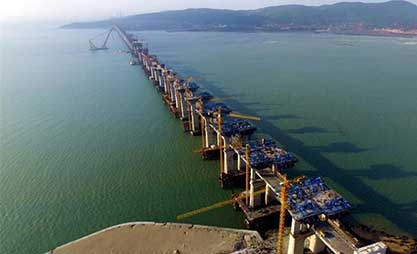 China's first cross-sea rail-road bridge takes shape
China's first cross-sea rail-road bridge takes shape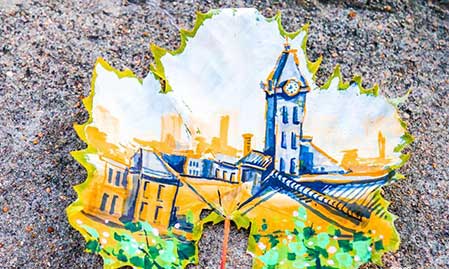 A fancy world painted on fallen leaves
A fancy world painted on fallen leaves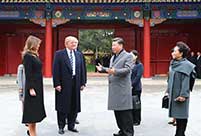 Photo album: Xi-Trump meeting in Beijing
Photo album: Xi-Trump meeting in Beijing Pitaya flower: blooms for one night, yields delicious fruit
Pitaya flower: blooms for one night, yields delicious fruit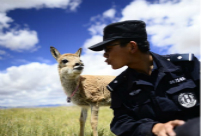 Hol Xil: Ideal habitat for Tibetan animals
Hol Xil: Ideal habitat for Tibetan animals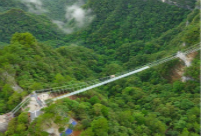 Skywalk made of glass opens in Guizhou's Yuntaishan
Skywalk made of glass opens in Guizhou's Yuntaishan Top 10 most sustainable cities in China
Top 10 most sustainable cities in China Top 10 European patent applicants in 2016
Top 10 European patent applicants in 2016 The power of 'She' in China
The power of 'She' in China Seven most beautiful art museums in China
Seven most beautiful art museums in China Cyber rumors must be effectively addressed
Cyber rumors must be effectively addressed
 Migrant workers leave Beijing in droves amid evictions enacted following deadly fire
Migrant workers leave Beijing in droves amid evictions enacted following deadly fire
 Profits before pupils
Profits before pupils
 Is Weibo still the best choice for young Chinese when it comes to social media platforms?
Is Weibo still the best choice for young Chinese when it comes to social media platforms?
Day|Week